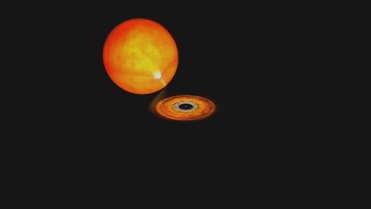Yes, The Apollo Moon Landings Really Did Happen










Yes, The Apollo Moon Landings Really Did Happen
“2.) We have extensive photographic and video evidence from the Apollo missions themselves. How could the lunar module have ascended back off of the surface and returned the astronauts back to the orbiting module which would take them back to Earth? Exactly like the video above shows, from direct Apollo 17 footage. The hypergolic propellant system isn’t based off of a single explosion, but rather a constant thrust of ~16,000 Newtons that was steadily delivered over a timespan of about 5 minutes. There’s no exhaust trail because there’s no lunar atmosphere, but you can track the spacecraft’s accelerated motion for yourself with even basic modern software.”
We’re less than a month away from the official 50th anniversary of the first crewed Moon landing, and there are all sorts of good reasons to celebrate. But for most of us alive today, the final Apollo mission occurred before we were born. Perhaps because of this distance between then and now, there are a great many people who don’t believe that the lunar landings ever occurred. While you might (rightfully) dismiss this position as an uninformed conspiracy, you can also immediately point to a slew of scientific evidence to demonstrate that yes, we did go to the Moon, and here is an enormous suite of data to back that up. From thousands of photographs to suites of instruments and scientific data to an examination of the landing sites today, everything lines up.
Come get the evidence for yourself, and don’t let someone’s conspiracy-minded ravings lead you astray.
More Posts from Ocrim1967 and Others










(Source)


Millisecond Pulsar with Magnetic Field Structure
A pulsar is a rapidly rotating neutron star that emits pulses of radiation (such as X-rays and radio waves) at regular intervals. A millisecond pulsar is one with a rotational period between 1 and 10 milliseconds, or from 60,000 to 6,000 revolutions per minute. Pulsars form in supernova explosions, but even newborn pulsars don’t spin at millisecond speeds, and they gradually slow down with age. If, however, a pulsar is a member of a binary system with a normal star, gas transferred from the companion can spin up an old, slow pulsar to the millisecond range.
Credit: NASA, Dana Berry: Lead Animator Michael McClare (HTSI)










Ten interesting facts about Saturn
Saturn is sometimes called “The Jewel of the Solar System.” It is a planet that is nothing like our own. Humans have been gazing up at Saturn for a long time. They have been wondering about it for thousands of years.
Here are some fun facts about the Ringed Planet.

Saturn is huge. It is the second largest planet in our Solar System. Jupiter is the only planet that is bigger.

The rings are huge but thin. The main rings could almost go from Earth to the moon. Yet, they are less than a kilometer thick.

Four spacecraft have visited Saturn: Pioneer 11, Voyager 1 and 2, and the Cassini-Huygens mission have all studied the planet.

Saturn has oval-shaped storms similar to Jupiter’s: The region around its north pole has a hexagonal-shaped pattern of clouds. Scientists think this may be a wave pattern in the upper clouds. The planet also has a vortex over its south pole that resembles a hurricane-like storm.

Saturn is made mostly of hydrogen and helium: It exists in layers that get denser farther into the planet. Eventually, deep inside, the hydrogen becomes metallic. At the core lies a hot interior. (click the image for a better resolution).

Saturn has 62 moons: Some of these are large, like Titan, the second largest moon in the Solar System. But most are tiny – just a few km across, and they have no official names. In fact, the last few were discovered by NASA’s Cassini orbiter just a few years ago. More will probably be discovered in the coming years.

Saturn orbits the Sun once every 29.4 Earth years: Its slow movement against the backdrop of stars earned it the nickname of “Lubadsagush” from the ancient Assyrians. The name means “oldest of the old”.

In Saturn there is aurora: Photographic composition made by the Hubble Space Telescope showing the occurrence of aurora in the southern hemisphere of Saturn at intervals of two days.The aurora is visible only in the ultraviolet.

Saturn spins on its axis very fast. A day on Saturn is 10 hours and 14 minutes.

You can see Saturn with your own eyes: Saturn appears as one of the 5 planets visible with the unaided eye. If Saturn is in the sky at night, you can head outside and see it. To see the rings and the ball of the planet itself, you’ll want to peer through a telescope. But you can amaze your friends and family by pointing out that bright star in the sky, and let them know they’re looking at Saturn.
sources: nasa.gov, universetoday.com and solarsystem.nasa.gov








How NASA Earth Data Aids America

Today we roll out a new communications project that highlights some of the many ways that NASA’s Earth observations help people strengthen communities across the United States.
Space for U.S. features stories on how Earth science data is used to make informed decisions about public health, disaster response and recovery and environmental protection. By highlighting advanced technology from a global perspective, our data helps provide people achieve groundbreaking insights.

For example, a family-owned coffee company in Maine used our sunlight, wind and temperature data to determine the placement of their power-generating solar wall.
Space for U.S. features 56 stories illustrating how our science has made an impact in every state in the nation as well as the District of Columbia, Puerto Rico and regions along the Atlantic, Pacific, Gulf of Mexico, and the Great Lakes.

For six decades, we’ve used the vantage point of space to better understand our home planet and improve lives. Using Space for U.S., you can browse through stories about how applied Earth science either by state or by topics such as animals, disasters, energy, health, land and water. Each click brings you a story about how people are putting NASA data to work.

Explore the true stories behind the innovative technology, groundbreaking insights, and extraordinary collaboration happening right here in the United States with Space for U.S.
Check out “Space for U.S.” today! www.nasa.gov/spaceforus

For more information on NASA Earth, head to www.nasa.gov/Earth or https://appliedsciences.nasa.gov.
Make sure to follow us on Tumblr for your regular dose of space: http://nasa.tumblr.com.

A Surprising Surge at Vavilov Ice Cap
After moving quite slowly for decades, the outlet glacier of Vavilov Ice Cap began sliding dozens of times faster than is typical. The ice moved fast enough for the fan-shaped edge of the glacier to protrude from an ice cap on October Revolution Island and spread widely across the Kara Sea. The Landsat images above were acquired on July 1, 2013, June 18, 2015, and June 24, 2018, respectively.
“The fact that an apparently stable, cold-based glacier suddenly went from moving 20 meters per year to 20 meters per day was extremely unusual, perhaps unprecedented,” said University of Colorado Boulder glaciologist Michael Willis. “The numbers here are simply nuts. Before this happened, as far as I knew, cold-based glaciers simply didn’t do that…couldn’t do that.”
Willis and his colleagues are still piecing together what triggered such a dramatic surge. They suspect that marine sediments immediately offshore are unusually slippery, perhaps containing clay. Also, water must have somehow found its way under the land-based part of the glacier, reducing friction and priming the ice to slide.
Full story here: go.nasa.gov/2Z931lc
Make sure to follow us on Tumblr for your regular dose of space: http://nasa.tumblr.com
First look at the 2024 total solar eclipse

The path of the April 8, 2024 total solar eclipse begins in the United States in Texas and ends in Maine. Google, INEGI
…The length of totality varies from one eclipse to the next. The reason is that Earth is not always the same distance from the Sun, and the Moon is not always the same distance from Earth. The Earth-Sun distance varies by 3 percent and the Moon-Earth distance by 12 percent. The result is that the maximum duration of totality from 2000 b.c. to a.d. 3000 is 7 minutes, 29 seconds. (That eclipse will occur July 16, 2186, so don’t get too excited for it.)
While the maximum length of totality during the April 8, 2024, eclipse won’t be that long, it’s still a worthy chunk of time: 4 minutes, 28 seconds — 67 percent longer than the one in 2017. And as with that one, everyone in the contiguous U.S. will see at least a partial eclipse. In fact, as long as you have clear skies on eclipse day, the Moon will cover at least 16.15 percent of the Sun’s brilliant surface. That minimum comes at Tatoosh Island, a tiny speck of land west of Neah Bay, Washington. And although our satellite covering any part of the Sun’s disk sounds cool, you need to aim higher.
Read more ~ Astronomy Magazine Posted by Michael Bakich on Sunday, September 23, 2018










FOR SALE: Mobile &Web Illustration









this cat is so cute
-
 terenceaaron reblogged this · 5 years ago
terenceaaron reblogged this · 5 years ago -
 nope-astrology-nope reblogged this · 5 years ago
nope-astrology-nope reblogged this · 5 years ago -
 greyscale-hands liked this · 5 years ago
greyscale-hands liked this · 5 years ago -
 batsbrains liked this · 5 years ago
batsbrains liked this · 5 years ago -
 everydayangst99 liked this · 5 years ago
everydayangst99 liked this · 5 years ago -
 pipuisci reblogged this · 5 years ago
pipuisci reblogged this · 5 years ago -
 baliiiiiiiiii liked this · 5 years ago
baliiiiiiiiii liked this · 5 years ago -
 gnifrus reblogged this · 5 years ago
gnifrus reblogged this · 5 years ago -
 gnifrus liked this · 5 years ago
gnifrus liked this · 5 years ago -
 icantputmyfingeronit reblogged this · 5 years ago
icantputmyfingeronit reblogged this · 5 years ago -
 glacialdrip reblogged this · 5 years ago
glacialdrip reblogged this · 5 years ago -
 glacialdrip liked this · 5 years ago
glacialdrip liked this · 5 years ago -
 ocrim1967 reblogged this · 5 years ago
ocrim1967 reblogged this · 5 years ago -
 ocrim1967 liked this · 5 years ago
ocrim1967 liked this · 5 years ago -
 eldritchabominatonsandscience liked this · 5 years ago
eldritchabominatonsandscience liked this · 5 years ago -
 mqddog reblogged this · 5 years ago
mqddog reblogged this · 5 years ago -
 devilledgreggs reblogged this · 5 years ago
devilledgreggs reblogged this · 5 years ago -
 devilledgreggs liked this · 5 years ago
devilledgreggs liked this · 5 years ago -
 chilejavabean liked this · 5 years ago
chilejavabean liked this · 5 years ago -
 maninder4996-blog liked this · 5 years ago
maninder4996-blog liked this · 5 years ago -
 countfilth liked this · 5 years ago
countfilth liked this · 5 years ago -
 marhialejjhha-blog liked this · 5 years ago
marhialejjhha-blog liked this · 5 years ago -
 wherediputtheeggs liked this · 5 years ago
wherediputtheeggs liked this · 5 years ago -
 desertinn liked this · 5 years ago
desertinn liked this · 5 years ago -
 starstorome liked this · 5 years ago
starstorome liked this · 5 years ago -
 demigxddess reblogged this · 5 years ago
demigxddess reblogged this · 5 years ago -
 temporalvagabond reblogged this · 5 years ago
temporalvagabond reblogged this · 5 years ago -
 temporalvagabond liked this · 5 years ago
temporalvagabond liked this · 5 years ago -
 fandom-trash-and-laughs liked this · 5 years ago
fandom-trash-and-laughs liked this · 5 years ago -
 sealers100 reblogged this · 5 years ago
sealers100 reblogged this · 5 years ago -
 sealers100 liked this · 5 years ago
sealers100 liked this · 5 years ago -
 thelefthandedarcher liked this · 5 years ago
thelefthandedarcher liked this · 5 years ago -
 sputnikscock420 liked this · 5 years ago
sputnikscock420 liked this · 5 years ago -
 erstwhilesky-blog reblogged this · 5 years ago
erstwhilesky-blog reblogged this · 5 years ago -
 spacetimewithstuartgary reblogged this · 5 years ago
spacetimewithstuartgary reblogged this · 5 years ago -
 pansyborg liked this · 5 years ago
pansyborg liked this · 5 years ago -
 perfectlychiefbarbarian liked this · 5 years ago
perfectlychiefbarbarian liked this · 5 years ago -
 kenxfox liked this · 5 years ago
kenxfox liked this · 5 years ago -
 ljamljam liked this · 5 years ago
ljamljam liked this · 5 years ago -
 muffinthestud liked this · 5 years ago
muffinthestud liked this · 5 years ago -
 thegreatdot liked this · 5 years ago
thegreatdot liked this · 5 years ago -
 batsbrains reblogged this · 5 years ago
batsbrains reblogged this · 5 years ago -
 shiester reblogged this · 5 years ago
shiester reblogged this · 5 years ago -
 foxjevilwild liked this · 5 years ago
foxjevilwild liked this · 5 years ago -
 bastetsbard liked this · 5 years ago
bastetsbard liked this · 5 years ago